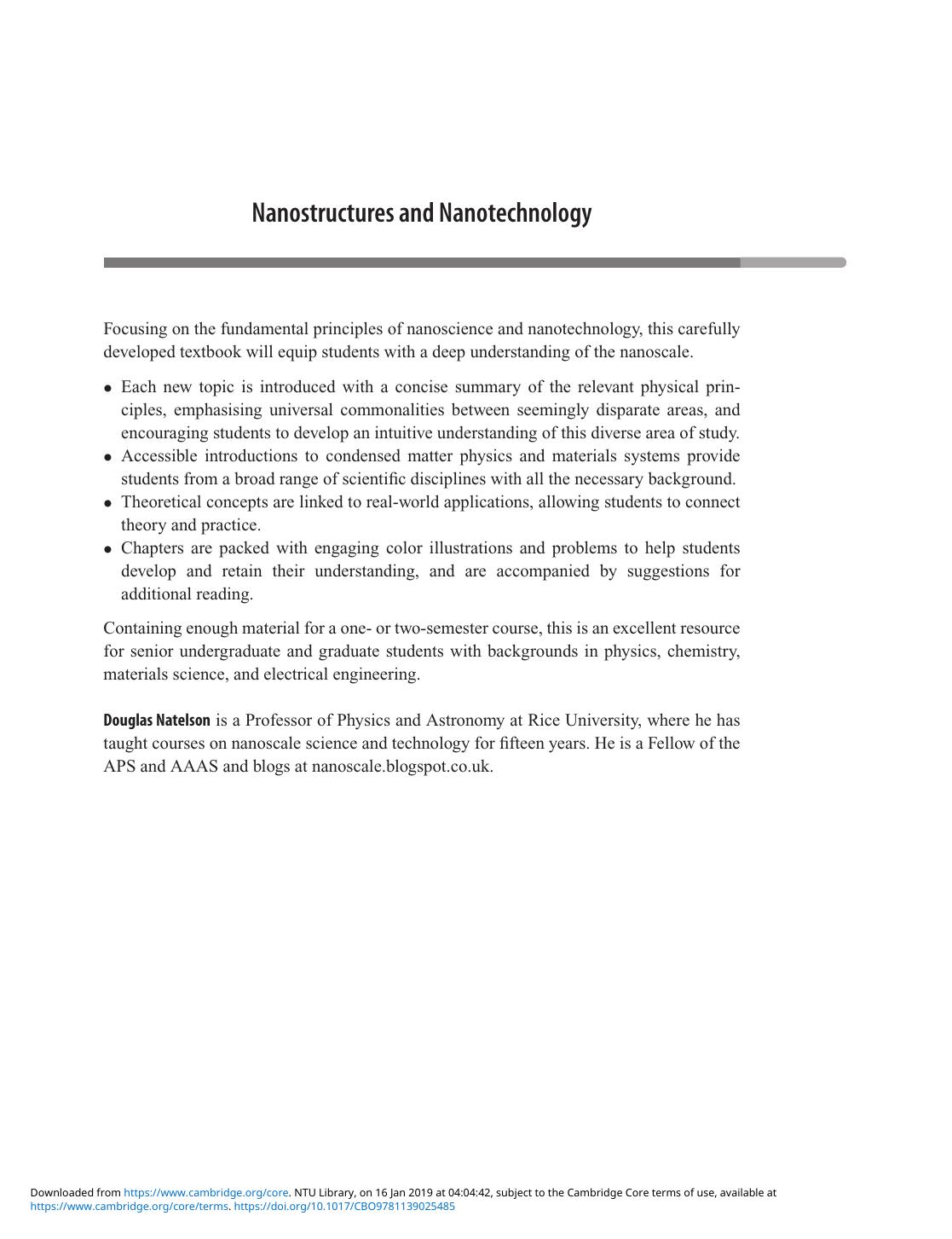Nanostructures and Nanotechnology by Douglas Natelson

Author:Douglas Natelson [Natelson, Douglas]
Language: eng
Format: epub, azw3, pdf
Publisher: Cambridge University Press
Published: 2015-06-29T21:00:00+00:00
7.4Magnetism at small scales
The interplay of magnetic energy scales and the intrinsic size scales inherent in magnetic phenomena make for very interesting magnetic phenomenology at the micro- and nanoscale. A question that arises immediately is, how do we assess and characterize the magnetic response of materials on these scales? There are a number of techniques, each with their own advantages and drawbacks. Here is a representative sampling.
Bitter decoration As we all learned in elementary school, one way to trace the spatial arrangement of magnetic field is to sprinkle a region of interest with iron filings, or, more generally, small magnetically polarizable particles. Those particles will feel forces as described in Eq. (7.9) and will concentrate in regions of strong fields. One can use the same approach to examine the field distribution caused by stray fields near domain boundaries on the surfaces of magnetic materials. This process, pioneered by Bitter [490] using colloid suspensions of magnetite, is not well suited for quantitative analysis or micro/nanoscale magnetism. However, it has been of major importance in understanding magnetic phenomena over the past century.
Hall sensors We considered the Hall effect back in Section 6.3 as a means of extracting knowledge of a conducting system’s parameters (2d carrier density and mobility) from longitudinal and Hall measurements in a known magnetic field. It is possible to come at this from the other direction, and use a well characterized semiconductor system’s Hall response to infer the stray magnetic field at some location. For a fixed Hall measurement geometry, the Hall response provides a measure of the component of the magnetic field normal to the plane of the 2d electronic system. Operating temperatures can be constrained by the type of Hall bar material. For example, GaAs/AlGaAs heterojunction electron gases typically need to be cooled well below room temperature to optimize their transport characteristics.
Download
Nanostructures and Nanotechnology by Douglas Natelson.azw3
Nanostructures and Nanotechnology by Douglas Natelson.pdf
This site does not store any files on its server. We only index and link to content provided by other sites. Please contact the content providers to delete copyright contents if any and email us, we'll remove relevant links or contents immediately.
Learning SQL by Alan Beaulieu(6153)
Weapons of Math Destruction by Cathy O'Neil(6077)
Digital Minimalism by Cal Newport;(5576)
iGen by Jean M. Twenge(5299)
Sapiens by Yuval Noah Harari(5256)
The Age of Surveillance Capitalism by Shoshana Zuboff(4112)
Elon Musk by Ashlee Vance(3976)
Thing Explainer by Randall Munroe(3842)
Apollo 8 by Jeffrey Kluger(3592)
Future Crimes by Marc Goodman(3454)
The Science Book (Big Ideas Simply Explained) by DK(3174)
Who Can You Trust? by Rachel Botsman(3055)
I Live in the Future & Here's How It Works by Nick Bilton(2896)
Infinite Energy Technologies by Finley Eversole(2887)
Steve Jobs by Walter Isaacson(2795)
Dawn of the New Everything by Jaron Lanier(2706)
The Innovators: How a Group of Hackers, Geniuses, and Geeks Created the Digital Revolution by Walter Isaacson(2664)
Chernobyl by Serhii Plokhy(2465)
Ben Franklin's Almanac by Candace Fleming(2418)
